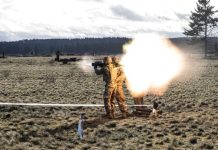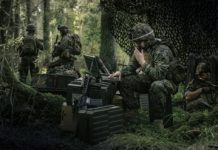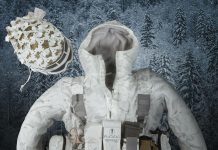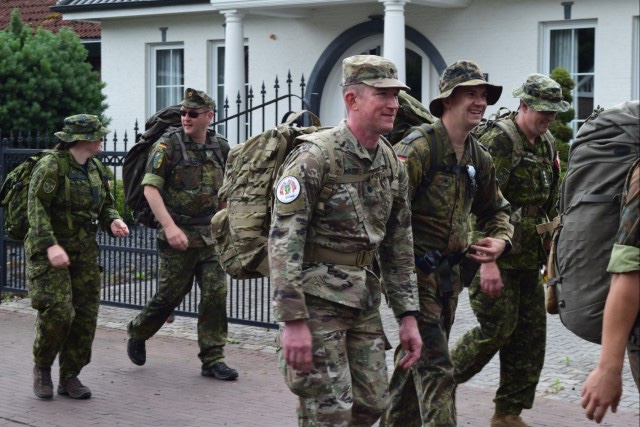
BRUNSSUM, Netherlands — Teams across U.S. Army Garrison Benelux and its mission partner organizations have prepared their minds and bodies for the Four Days March July 18 to 21, 2023, in Nijmegen.
Otherwise known as “De Vierdaagse” in Dutch, participants walk between 30 to 50 kilometers — or 18.6 to 31 miles — each day through villages and the countryside while an estimated 2 million spectators cheer them on. The ultimate goal for the marchers is to achieve the Four Days March Cross, an official decoration of the Kingdom of the Netherlands, which can be worn on many nations’ military uniforms.
Lt. Col. Shaun Reynolds, a civil affairs officer with the Allied Joint Force Command Brunssum J9 (Civil-Military Cooperation), is registered to participate with the installation’s Allied International Marching Team. Reynolds finished the march for the first time last year, receiving his cross. This year he is marching for the second award, which adds a crown to the medallion.
“It’s a motivator, getting the cross,” Reynolds said, “but [now] doing it a second year … I’m going for the crown.”
This year celebrates the 105th edition of the Nijmegen Four Days March. As the world’s largest multiple day marching event, it invites up to 47,000 participants from over 70 nationalities. Participants can register as an individual or in a group and choose to compete in either the civilian or the military category. Ages range from as young as 11 years old to over 90 years old.
“There’s people that travel from all over the world [to participate in the march],” said Staff Sgt. Alexander Bertsch, a 424th Air Base Squadron air traffic controller at Chièvres Air Base, Belgium, and team captain of the installation’s marching team. This is his second time participating.
The team, made up of service members from the U.S. Air Force and Army, started training for the march a few months ago.
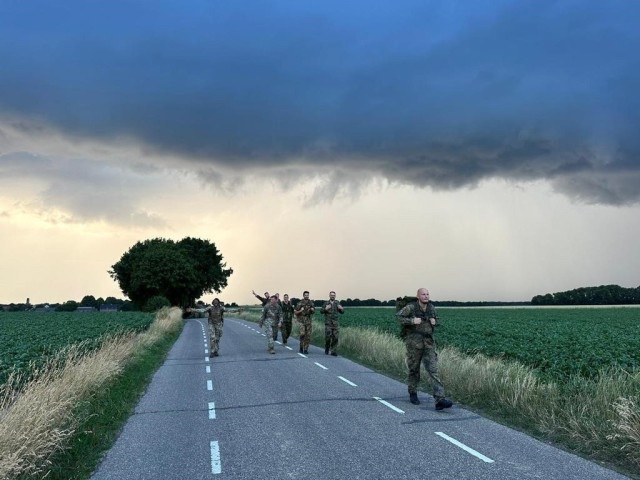
“It’s not just a show-up-and-do-it kind of thing,” said Bertsch.
Master Sgt. Stephen Spaeder, 424 ABS emergency operations superintendent, agreed.
“I went in thinking it was just a walk. It was a lot more challenging than I expected [and] definitely a humbling experience,” he said. “I had just run a marathon the month beforehand, so I thought I was ready.”
Spaeder sustained a serious knee injury from the lengthy marching last year, landing him in physical therapy for three months after the event was over.
He learned valuable lessons from the previous year and began training earlier for the 2023 event. Additionally, this year Spaeder knows exactly what he will carry in his rucksack. While all military participants must carry 10 kilograms — 22 lbs. — of weight on their backs, it takes experience to know what items are best to bring along.
Spaeder also determined that taking more breaks throughout each marching day to take off his boots and socks in order to cool his feet and ward off blisters is an essential ingredient to success.
“You learn a lot about yourself and your feet,” Reynolds said. From his practice marches and experience last year at the Nijmegen event, he discovered that he needed to purchase boots a whole size larger than usual for a march this length.
He also emphasized how important it is to wear broken-in boots and learn how to properly care for your feet before even attempting the march.
While blisters top the list for injuries during the march, Bertsch struggled with different issues starting on the third day. The excessive marching caused his calves and ankles to tighten up, and he had to push hard through the final day to the finish line.
“I struggled to take each step,” he said. “You have to rely on the people around you. Without my team, I don’t think I would have made it.”
Even so, Bertsch will never forget the atmosphere of all four days of the march.
“It’s really inspiring to see all these people going through a rough time and being happy about it,” he said. “You can do a lot more walking than you think you can do, and keep good spirits despite the challenge.”
Members of both teams recounted how special it was to see the community and spectator involvement at the event. They explained that throughout the four days children were passing out snacks and candy, giving high-fives and asking for military patches off their uniforms. Crowds were clapping at 4 a.m. as the marchers began their day’s journey. Spectators cheered them on nearly the entire course as they marched up to 12 hours each day. DJs and bands played live music at many locations. One of the rest stops even offered drinks and bratwursts.
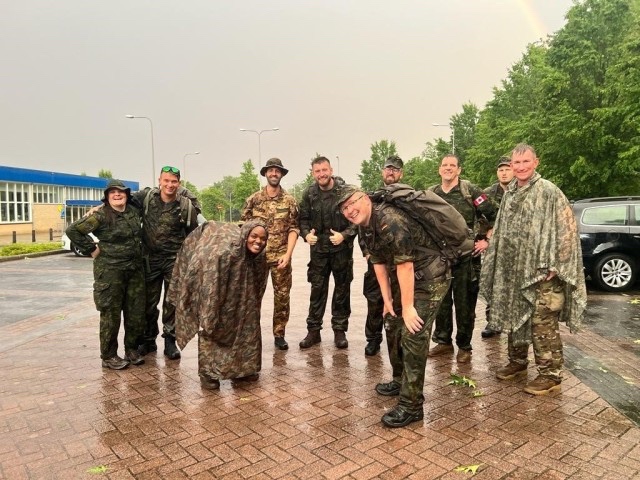
Maj. Juan Fuentes, future operations officer at USAG Benelux-Brunssum, will be participating in the march for the first time this year as part of the Chièvres Air Base team.
“I just really want to experience being … part of something,” he said. “There’s always a little bit of nerves and excitement. It’s an event I need to be part of.”
The Allied International March Team and Chièvres Air Base team join nearly 5,000 other military participants in the march. Their course will begin and end each day at the military camp Heumensoord, just south of Nijmegen. This camp is built every year for the Four Days March and supplies a dining facility, showers and sleeping accommodations for registered military detachments.
Nearly 90% of those who start the march cross the finish line four days later. Typically, around 70% of those people have participated in the march on more than one occasion.
“The atmosphere is what brings people back,” said German Armed Forces Maj. Heiko Lingelbach, a member of the German Communications Directorate at JFC Brunssum.
Lingelbach, who is also the chairperson of the Allied International March Team and leads a multi-national group of 41 participants this year, has seen people sign up for the march again and again.
“It grows on you, and you say ‘ok, I can do this again,’” said Lingelbach.
Reynolds emphasized the tremendous crowd support towards the end of the march.
“The last day you’re really on air even if you’re hurting,” he said.
During the last 5 kilometers (3.1 miles), all marchers are given gladiola flowers as they join a procession down the Nijmegen city center called Via Gladiola.
More than 250,000 spectators gather for this finale and offer high-fives, hugs, and cheers. Senior officials and dignitaries salute the military as they finish their last steps.
“I recommend that anyone who has the chance to do it, should do it,” said Spaeder, “I had a blast!”
By Sandra Wilson, USAG Benelux Public Affairs
Editor’s Note: The following story is the thirteenth in the series Bits of the Benelux. This series takes a deep dive into the stories, cultures and traditions found throughout Belgium, the Netherlands and Germany.
You can skip to the end and leave a response. Pinging is currently not allowed.


